Are you ready to transform your outdoor space while saving water and supporting the environment?
An introduction to xeriscaping reveals how to create a beautiful, sustainable landscape that thrives with minimal water.
By adopting eco-friendly principles, you can enjoy vibrant gardens, reduce costs, and make a positive impact—all while enhancing your home’s curb appeal.
Xeriscaping Key Takeaways
- Xeriscaping highlights a sustainable landscaping method focused on water conservation and eco-friendly design.
- By using drought-tolerant plants, efficient irrigation, and thoughtful planning, xeriscaping creates beautiful, low-maintenance landscapes that support biodiversity and reduce costs.
- It’s perfect for anyone seeking a greener, more sustainable outdoor space.
An Introduction to Xeriscaping: Sustainable Landscaping
Xeriscaping presents a sustainable alternative to traditional landscaping, especially in areas where water conservation is essential.
This method emphasizes key principles, such as improving soil quality and utilizing efficient irrigation techniques.
It also underscores various benefits, including significant water savings and reduced maintenance requirements.
There are certain common misconceptions about xeriscaping that will be addressed, and practical guidance will be offered on how to implement this approach in your own yard.
Regardless of whether you are an experienced gardener or a novice, you’ll discover how xeriscaping can enhance your outdoor space while also promoting ecological health.
What is Xeriscaping?
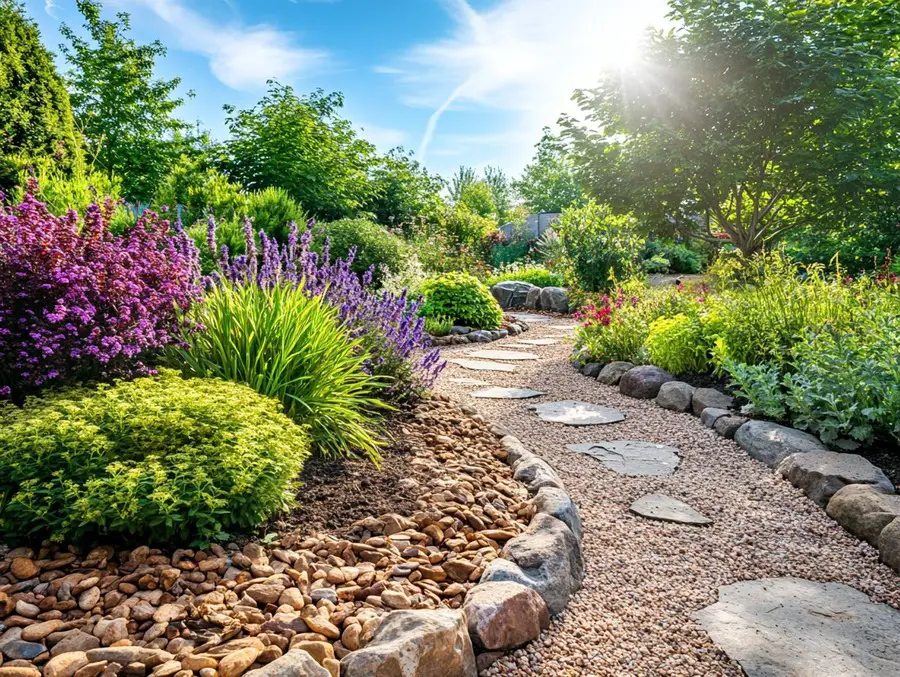
Xeriscaping is a sustainable landscaping method aimed at reducing or eliminating the need for irrigation.
It achieves this by incorporating drought-resistant plants, efficient landscape design, and eco-friendly techniques that promote water conservation and financial savings.
This approach is particularly important in areas with limited water resources, such as Colorado and Salt Lake City.
Homeowners, guided by organizations like the Denver Water Department, have the opportunity to create stunning xeriscape gardens that not only enhance their property value but also support local wildlife habitats and foster a sense of environmental awareness.
Xeriscaping is a sustainable landscaping method that reduces water usage, maintenance, and costs.
- It involves planning, soil improvement, appropriate plant selection, efficient irrigation, mulching, and maintenance.
Benefits of xeriscaping include water conservation, cost savings, low maintenance, increased biodiversity, and improved aesthetics.
- It differs from traditional landscaping in its focus on water conservation and the use of drought-tolerant plants.
To implement xeriscaping, assess your yard and climate, choose drought-tolerant plants, use efficient irrigation methods, incorporate mulch and hardscaping, and regularly maintain and adapt your xeriscape.
- Avoid common misconceptions, such as a barren or unattractive yard.
What are the Principles of Xeriscaping?
The principles of xeriscaping provide essential guidelines for developing drought-tolerant landscapes that use minimal water while fostering sustainability and environmental awareness.
By concentrating on important elements such as the planning and design of xeriscape gardens and improving soil quality.
By choosing appropriate native and drought-resistant plants, utilizing efficient irrigation systems, applying mulching techniques, and recognizing maintenance requirements, homeowners can enhance their outdoor spaces in an environmentally friendly way.
Planning and Designing
Planning and designing are essential steps in the xeriscaping process, as they establish the groundwork for creating an effective and visually appealing outdoor space that flourishes in arid conditions.
A well-considered landscape design integrates native plants and drought-resistant species, ensuring a low-maintenance landscape that enhances property value while promoting environmentally friendly landscaping practices.
Effective planning starts with a comprehensive site analysis to evaluate sunlight exposure, soil conditions, and water drainage.
By understanding these factors, you can create a xeriscape layout that complements the natural environment.
The placement of plants is a critical consideration; grouping plants with similar water and sunlight requirements can significantly reduce irrigation needs.
Here are a few methods to implement effective xeriscaping:
- Prioritize Native Plants: These plants are well-adapted to local climates and require minimal water once established. Consider species like Amelanchier utahensis (Utah serviceberry) and Penstemon for their drought tolerance.
- Incorporate Hardscaping Elements: Features like paving stones, gravel paths, and walls not only define different areas but also help minimize moisture loss.
- Implement Zones: Designating specific areas for varying watering needs can further optimize water usage.
By employing these strategies, you can achieve a sustainable landscape design that highlights the beauty of nature while conserving valuable resources.
Soil Improvement
Soil improvement plays a crucial role in xeriscaping, as it enhances the health of native plants and maintains the ecological balance of a landscape.
By incorporating organic matter, improving soil structure, and utilizing soil amendments, homeowners can create a nutrient-rich environment that supports drought-tolerant plants while minimizing the need for excessive irrigation.
Various techniques can be employed to successfully enhance the soil. One effective approach is adding compost, which enriches the soil and improves its texture.
Healthy soil leads to better water retention and drainage, both of which are essential for sustainable plant growth.
Another useful technique is applying mulch around plants; this practice helps regulate soil temperature, retain moisture, and suppress weeds.
Additionally, conducting regular soil tests allows homeowners to make informed decisions regarding the specific amendments required to boost nutrient levels and adjust pH.
Tailoring the soil to meet the needs of desired flora is important for their success.
By implementing these practices, homeowners can strengthen both the soil and the ecosystem, ultimately fostering a thriving xeriscape that conserves water and promotes biodiversity, contributing to environmental consciousness.
Appropriate Plant Selection
Appropriate plant selection is essential for creating a successful xeriscape garden that thrives with minimal water while also supporting local wildlife habitats.
By carefully choosing plants, gardeners contribute to environmental sustainability and create a visually appealing space.
It is crucial to select plants that are not only drought-tolerant but also native to the region, as these species are well-adapted to the local climate and soil conditions.
For example, incorporating native grasses like Bouteloua gracilis or flowering plants such as Echinacea purpurea can significantly reduce the need for irrigation.
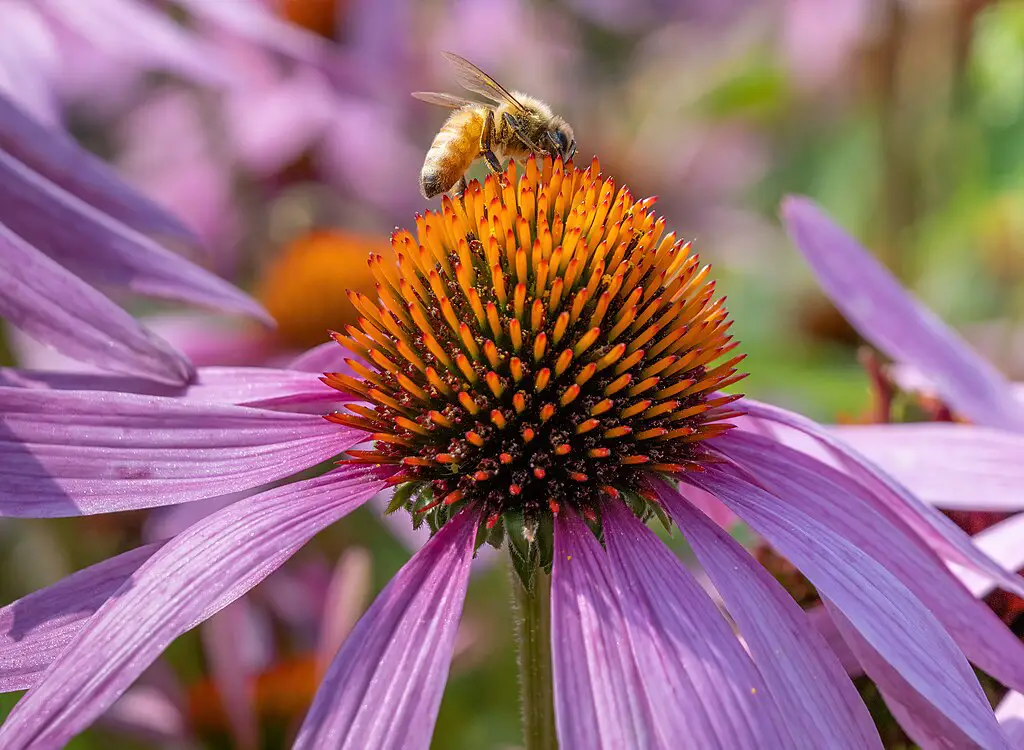
- Native plants often attract pollinators, which enhances the ecosystem.
- Other suitable plants include Salvia dorrii aka Purple Sage and Rudbeckia hirta, both known for their resilience.
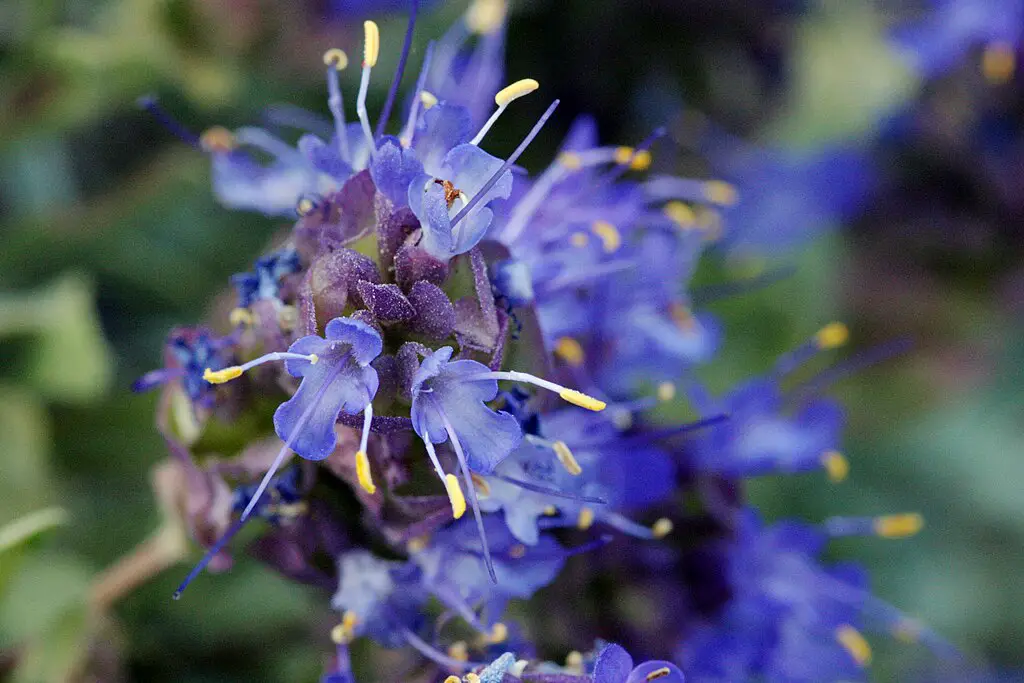
- By prioritizing these species, gardeners promote water conservation and create a thriving habitat for local fauna.
Ultimately, the right selection of plants positively impacts resource conservation and encourages a healthier landscape.
Efficient Irrigation
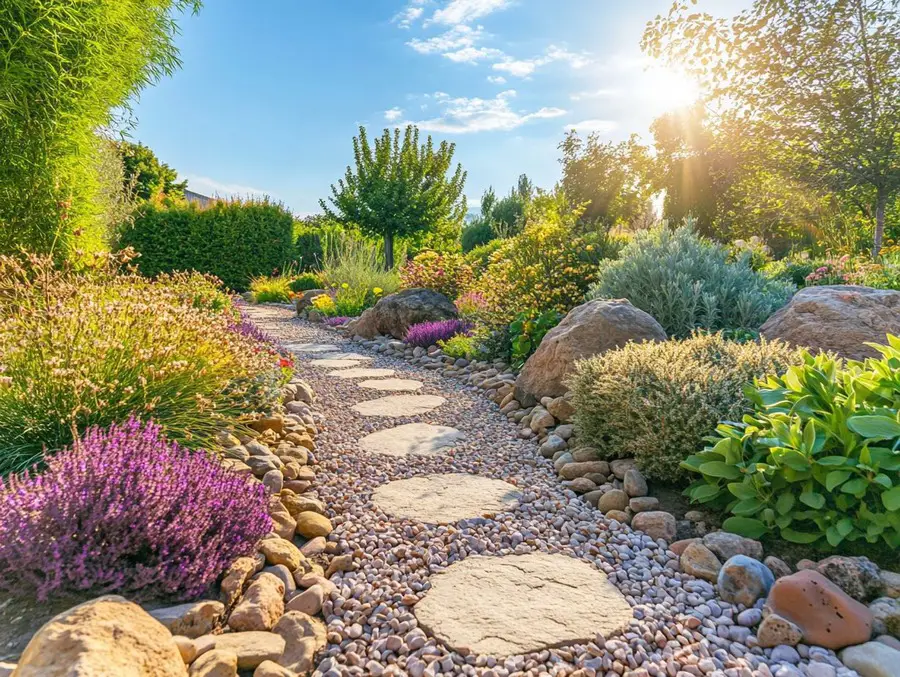
Efficient irrigation plays a crucial role in maintaining a xeriscape garden, as it ensures that water usage is minimized while still fulfilling the needs of drought-tolerant plants.
By implementing advanced irrigation systems, such as drip irrigation or smart controllers, one can significantly reduce water waste and promote responsible water conservation practices.
Incorporating these innovative methods allows garden enthusiasts to enjoy lush greenery without the concern of overconsumption.
For example, drip irrigation delivers water directly to the root zones of plants, enabling targeted moisture application that reduces runoff and evaporation.
Similarly, smart controllers utilize weather data to adjust watering schedules according to actual climate conditions.
This technology not only conserves water but also optimizes plant health, allowing gardens to thrive even in arid environments and maintaining critical wildlife habitats.
- Drip Irrigation: Targets plant roots, boosting efficiency.
- Smart Controllers: Adjust watering based on local weather.
- Rain Sensors: Prevent irrigation after rainfall, conserving resources.
Ultimately, these systems align seamlessly with the principles of xeriscaping, which emphasizes sustainability and eco-friendliness in landscape design.
The objective is clear: to maintain a vibrant garden while respecting the planet’s invaluable resources.
Mulching
Mulching plays a crucial role in xeriscaping by helping to conserve water, suppress weeds, and improve soil quality.
When you apply organic mulch around plants, it can enhance moisture retention, stabilize soil temperature, and reduce the maintenance needs of a xeriscape garden.
Various types of mulch, such as wood chips, straw, and grass clippings, serve different purposes that benefit the overall landscape.
For example, using bark mulch not only provides long-lasting coverage but also creates a habitat for beneficial microorganisms that enhance soil health.
Here are some specific types of mulch and their benefits:
- Wood Chips: Excellent for preventing erosion and maintaining soil structure.
- Straw: An affordable option that aids in moisture retention while breaking down to enrich the soil.
- Grass Clippings: Quickly decompose and provide a nitrogen boost to the soil, promoting eco-friendly landscaping techniques.
To fully maximize the benefits of mulching, a popular landscaping method, it’s important to ensure that the layer is sufficiently thick and to avoid covering the crowns of the plants.
This simple practice can significantly impact water conservation and contribute to sustainable gardening efforts.
Maintenance
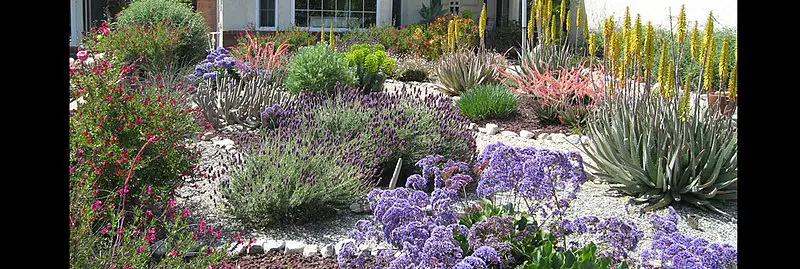
Maintenance in xeriscaping is typically low due to the careful selection of drought-resistant plants and environmentally friendly landscape techniques.
These plants are specifically adapted to flourish in dry conditions, needing minimal water beyond what nature provides through rainfall.
Xeriscape gardens advocates for sustainability, fostering a harmonious ecosystem that benefits both the environment and local wildlife.
It’s important to regularly monitor the health of the plants, so incorporating checks for pests into your routine is advisable. Here are a few practices to consider:
- Prune plants as needed to maintain their shape and overall health.
- Watch irrigation systems to ensure they promote efficient water usage.
- Consider adding mulch to help retain soil moisture and suppress weed growth.
Incorporating native plants, such as Amelanchier utahensis and Hesperaloe parviflora (Red Yucca) can significantly enhance biodiversity, attracting beneficial insects and pollinators.
A thriving xeriscape garden is not only visually appealing but also plays a crucial role in contributing to a healthier ecosystem.
What are the Benefits of Xeriscaping?
The benefits of xeriscaping go well beyond just enhancing visual appeal.
This approach offers substantial advantages, including water conservation, financial savings, increased biodiversity, and improved landscaping aesthetics.
Organizations like the Denver Water Department have promoted xeriscaping as a key strategy in sustainable landscaping.
By adopting xeriscaping techniques, homeowners have the opportunity to design beautiful, sustainable outdoor spaces that benefit the environment and reduce maintenance requirements and water consumption.
This method is particularly effective when combined with horticulture knowledge to create landscapes that thrive with minimal resources.
Water Conservation
Water conservation stands out as one of the most significant benefits of xeriscaping, as it allows homeowners to effectively reduce their overall water usage through the thoughtful selection of drought-tolerant plants and efficient irrigation systems.
This sustainable landscape design approach, recognized in cities like Salt Lake City, not only helps preserve valuable water resources but also fosters a healthier ecosystem.
By adopting xeriscaping techniques, individuals can truly make a meaningful impact on their water consumption, with studies indicating that outdoor water usage can decrease by as much as 60%.
This reduction is achieved through various methods, such as applying mulch to retain soil moisture and utilizing drip irrigation systems that deliver water directly to plant roots, thus minimizing evaporation.
For example, homeowners who transition from traditional grass lawns to native plants like Penstemon and Juniperus osteosperma can save thousands of gallons of water each year.

- A case study from Phoenix revealed that xeriscaped yards consumed less than half the water compared to conventional landscapes.
- Choosing local, drought-resistant species, such as succulents and native wildflowers, allows for thriving gardens with minimal watering.
Through these strategies, xeriscaping not only serves as an effective water-saving solution but also represents a meaningful commitment to supporting the local environment and advancing environmental science.
Cost Savings
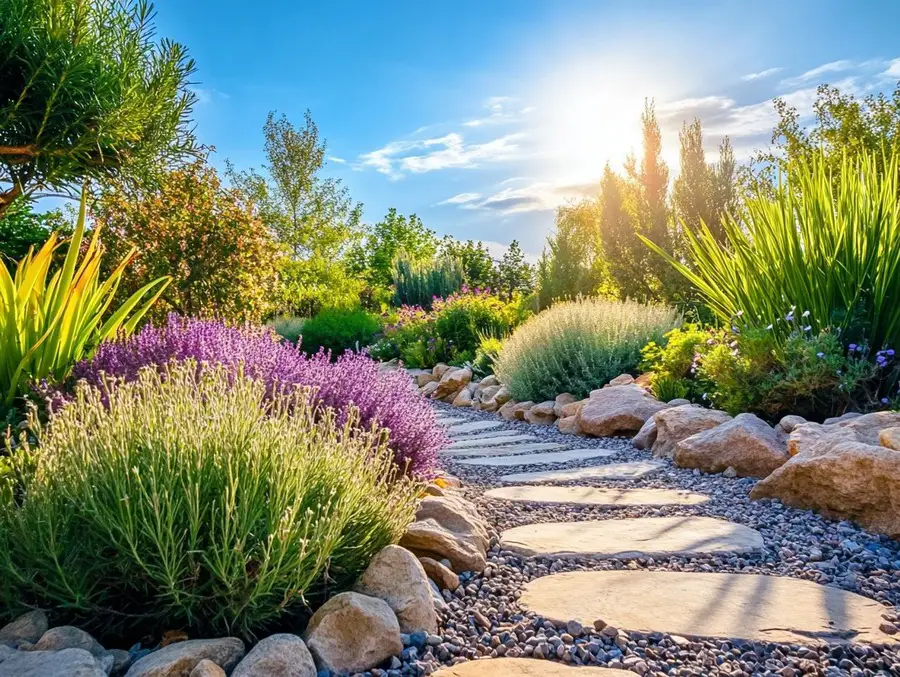
Implementing xeriscaping can result in significant cost savings for homeowners, particularly regarding reduced water bills and lower maintenance requirements.
By designing a landscape that thrives with minimal irrigation, homeowners can enjoy financial benefits while also contributing to environmental sustainability and reducing reliance on chemical fertilizers.
When xeriscaping is integrated into a property, the advantages extend beyond the immediate reduction in water usage.
For instance, homeowners may experience:
- Lower landscaping maintenance costs, as drought-resistant plants require less pruning and care.
- Fewer expenses related to fertilization and pest control, given that many xeriscaped plants are more resilient to common pests.
While there may be an initial investment in xeriscaping, the long-term savings can be substantial.
In regions like Colorado with pronounced dry seasons, residents who adopt xeriscaping can save an average of:
| Year | Estimated Savings |
|---|---|
| 1 | $300 |
| 5 | $1,500 |
| 10 | $3,000 |
By reducing the frequency of irrigation needs, homeowners not only preserve essential water resources but also promote a more sustainable environment.
Low Maintenance
One of the most attractive features of xeriscaping is its low maintenance requirements, enabling homeowners to appreciate beautiful landscapes without the constant upkeep typically associated with traditional landscaping.
By selecting drought-resistant plants and adopting sustainable practices, xeriscape gardens can thrive with minimal intervention, providing a habitat for wildlife that enhances biodiversity.
Choosing native plants is essential for creating low-maintenance landscapes, as these species are well-adapted to the local climate and soil conditions.
Consequently, they require less watering and fewer fertilizers, which significantly reduces both the environmental impact and the homeowner’s workload.
Some excellent options to consider include:
- Agave species, known for their striking forms
- Lavender is valued for its aromatic and hardy nature
- Desert marigolds, which offer vibrant coloration
Incorporating mulches and drip irrigation systems not only conserves water but also reduces the need for weeding and mowing.
Ultimately, this efficient approach allows homeowners to devote less time to landscape maintenance and more time enjoying their outdoor sanctuary.
Increased Biodiversity
Xeriscaping is an effective approach that promotes increased biodiversity by encouraging the use of native plants, such as Hymenoxys, which in turn supports local ecosystems and wildlife habitats.
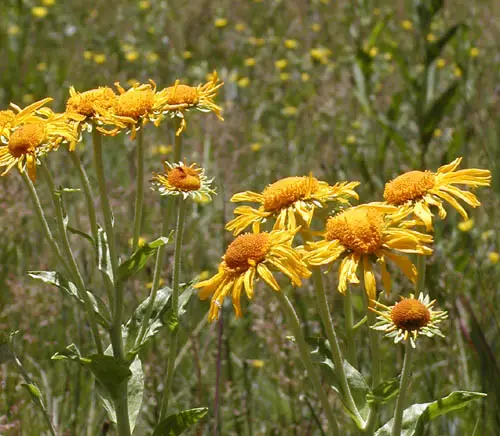
This method not only enhances the visual appeal of landscapes but also fosters a balanced environment where pollinators and other beneficial species can thrive.
By implementing xeriscaping, homeowners can create vibrant gardens that provide essential habitats for various organisms.
Utilizing native flora, such as wildflowers, shrubs, and trees, offers critical food sources and shelter for birds, bees, and butterflies.
For example, establishing habitats for hummingbirds can significantly increase pollination rates among crops and flowers, benefiting the entire ecosystem.
Additionally, native plants require less water, which contributes to important water conservation efforts.
They are also more resilient to local pests and diseases, thereby reducing the need for chemical pesticides and herbicides.
This sustainable landscaping method not only supports local wildlife but also promotes a dynamic natural environment, enriching the overall vitality of both suburban and urban areas.
Improved Aesthetics
The enhanced aesthetics of xeriscaping present a compelling option for homeowners interested in creating visually striking gardens while also embracing eco-friendly landscaping practices.
By integrating a diverse range of drought-tolerant plants along with thoughtful landscape design, xeriscape gardens can be both colorful and engaging.
By strategically selecting plants that thrive in arid conditions, such as succulents, ornamental grasses, and native wildflowers,the overall appearance can remain vibrant and sustainable.
Xeriscaping promotes a harmonious balance between beauty and functionality.
Featuring layered textures and colors that evolve with the seasons. Incorporating elements like decorative rock pathways, gravel beds, and well-placed boulders adds visual appeal and reduces the need for excessive irrigation.
Some key strategies include:
- Utilizing native plants that naturally work together with the local ecosystem.
- Implementing hardscaping elements to define different spaces within the garden.
- Designing focal points, such as water features or sculptural installations.
This thoughtful approach does more than enhance the garden’s charm; it also cultivates an environmentally-conscious mindset among both caretakers and visitors.
How is Xeriscaping Different from Traditional Landscaping?
Xeriscaping represents a distinct departure from traditional landscaping, particularly in its approach to water usage, plant selection, and overall maintenance requirements.
This method emphasizes sustainability and environmental awareness.
While traditional landscaping often depends heavily on irrigation systems and non-native plants, xeriscaping prioritizes drought-tolerant and native species that flourish with minimal water.
This results in a more sustainable landscape. Such an approach not only conserves precious water resources.
It also reduces the frequency of maintenance tasks, making it a compelling choice for homeowners who prefer to minimize the time spent on trimming and watering their gardens.
By opting for native plants, xeriscaping fosters biodiversity and provides habitat for local wildlife, thereby enhancing the overall ecosystem.
In contrast, conventional landscaping practices may inadvertently disrupt these ecosystems by introducing invasive species and necessitating fertilizers that can compromise local soil health.
- Water Usage: Xeriscaping conserves water compared to traditional methods.
- Maintenance: Xeriscaping requires less frequent upkeep.
- Ecosystem Impact: Native plants support local wildlife and enhance biodiversity.
What are Some Common Misconceptions about Xeriscaping in Denver and Salt Lake City?

There are several common misconceptions surrounding xeriscaping, particularly the notion that it results in barren landscapes dominated solely by rocks and drought-resistant plants.
In reality, xeriscaping encompasses a diverse array of vegetation and design techniques, allowing for the creation of lush, vibrant gardens that are both aesthetically pleasing and environmentally sustainable.
This approach has been promoted by entities such as the Denver Water Department to encourage sustainable landscaping methods.
Many individuals assume that xeriscaping leads to a monotonous appearance, but this could not be further from the truth.
A well-designed xeriscape can showcase a rich palette of colors, textures, and forms by incorporating a variety of native plants such as Amelanchier utahensis and ornamental features.
- It is important to note that xeriscaping is not limited to succulents and cacti; it also includes shrubs, perennials, and even flowering plants like Hesperaloe parviflora and Hymenoxys that thrive in arid conditions.
- Additionally, integrating elements such as mulch, decorative stones, and pathways can significantly enhance the visual appeal of the garden.
Some may consider the maintenance of a xeriscaped yard to be challenging.
However, once established, these gardens often require less water and maintenance compared to traditional lawns.
This makes xeriscaping an excellent choice for homeowners who wish to conserve resources and enjoy a beautiful landscape, much like those found in parts of Colorado, without compromising on beauty.
How Can You Implement Xeriscaping in Your Own Yard?
Implementing xeriscaping in your yard can be both an exciting and rewarding endeavor, offering homeowners the opportunity to create a vibrant landscape that conserves water and supports local ecosystems.
By following a straightforward series of steps, such as assessing your yard and climate, selecting drought-tolerant plants, and choosing efficient irrigation systems, you can transform your outdoor space into a low-maintenance, eco-friendly environment.
Assess Your Yard and Climate
Assessing your yard and climate is the essential first step to successfully implementing xeriscaping.
This process allows you to understand the specific conditions that will influence plant selection and overall landscape design.
Factors such as soil type, sun exposure, and local climate conditions significantly impact the choice of native and drought-tolerant plants best suited for your xeriscape garden.
To begin this transformative journey, it is advisable to start with soil testing. This testing provides vital information about nutrient levels and pH balance, which is crucial for selecting plants that will thrive in the unique composition of your soil.
In addition, conducting sunlight exposure mapping is important. By observing how much sun different areas of your yard receive throughout the day, you can document this information and strategically position plants according to their light requirements.
Understanding local weather patterns is also critical. Monitoring rainfall trends, seasonal temperatures, and potential drought periods will help you gauge how often watering might be necessary. It may be beneficial to create a list of factors to consider, such as:
- Soil texture and composition
- Sun exposure (full sun, partial shade, etc.)
- Local temperature extremes
- Typical precipitation levels
Integrating all of this knowledge will greatly enhance your success in xeriscaping, enabling you to create a resilient and sustainable garden that thrives with minimal resources.
Choose Drought-Tolerant Plants
Selecting the appropriate drought-tolerant plants is crucial for establishing a successful xeriscape garden that thrives on minimal water while also supporting local wildlife habitats.
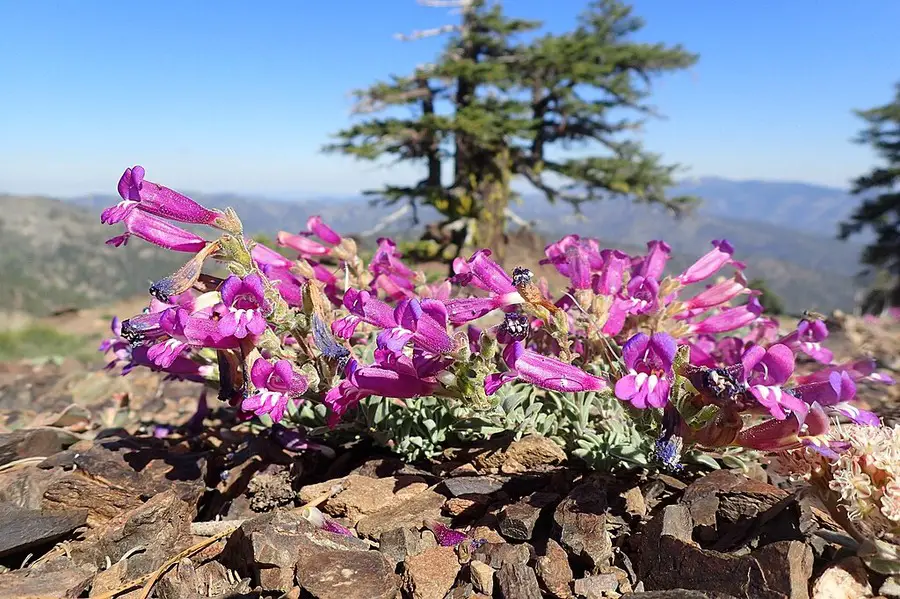
By opting for native plants like Juniperus osteosperma, Penstemon, and other native species introduced by experts such as Joe Alvarez, homeowners can create gardens that are both resilient and beneficial to the ecosystem.
When contemplating plant selections, it is important to focus on a few key criteria that can significantly affect the health of your garden.
Drought-tolerant native plants are generally well-adapted to local climates and require less maintenance, making them an excellent choice for xeriscaping.
Some popular options include:
- Aloe Vera – Renowned for its medicinal properties and drought resistance.
- Lavandula – This plant not only attracts pollinators but also adds a delightful fragrance to your outdoor space.
- Agave – These are visually striking architectural plants that thrive in arid conditions.
To boost the biodiversity of the garden, aim to select a variety of plant sizes and types that create different layers of habitat.
Native plants play a vital role in supporting local fauna, including birds and beneficial insects, while also contributing to healthier ecosystems.
By adhering to these guidelines, gardeners can cultivate spaces that are not only aesthetically pleasing but also instrumental in preserving regional ecology.
Use Efficient Irrigation Methods
Utilizing efficient irrigation methods is a crucial aspect of xeriscaping, as it ensures that water is utilized wisely to nurture drought-tolerant plants without unnecessary waste.
Techniques such as drip irrigation, rainwater harvesting, and smart irrigation controllers can significantly enhance water conservation while still allowing for a thriving garden.
Among the various efficient methods, drip irrigation stands out as an excellent choice for those aiming to optimize water usage.
This technique delivers water directly to the roots of plants, effectively minimizing evaporation and runoff.
Implementing rainwater harvesting systems can substantially reduce the reliance on municipal water supplies.
By collecting and storing rainwater, garden enthusiasts can utilize this valuable resource for irrigation during dry periods.
Employing smart irrigation controllers allows for the personalization of watering schedules based on real-time weather conditions and soil moisture levels, ensuring that plants receive the precise amount of water they need when they need it.
- Drip Irrigation: Ideal for shrubs and vegetables, this method minimizes waste.
- Rainwater Harvesting: An eco-friendly approach that helps reduce water costs.
- Smart Controllers: These increase efficiency while saving time and resources.
Incorporate Mulch and Hardscaping
Incorporating mulch and hardscaping elements into your xeriscape design can significantly enhance water retention, minimize maintenance requirements, and add visual interest to your landscape.
By applying organic mulch to cover the soil and thoughtfully placing hardscaping features, homeowners can establish a balanced and sustainable outdoor environment.
Utilizing mulch serves a dual purpose: it conserves moisture and suppresses weed growth, fostering a healthier environment for plants.
There are various types of mulch available, including wood chips, bark, and straw, each offering unique advantages.
Regarding hardscaping, using stones, gravel, or permeable pavers can effectively define pathways and seating areas, ultimately making the outdoor space more functional and attractive. Here are a few benefits to consider:
- Organic mulch enriches the soil as it decomposes.
- Stones can be used creatively to create beautiful borders or decorative features.
- Permeable surfaces enhance drainage, reducing runoff and erosion.
In combination, these elements not only elevate the aesthetic appeal of the landscape but also contribute significantly to the overall health of the xeriscape, allowing for a vibrant, flourishing garden with a lower environmental impact.
Regular Maintenance and Adaptation
Regular maintenance and adaptation are essential for the long-term success of a xeriscape garden.
This approach allows homeowners to keep their landscapes healthy and vibrant while adjusting to changing conditions.
By monitoring plant health, adjusting irrigation practices, and updating plant selections as needed, homeowners can cultivate both beauty and sustainability in their xeriscape.
Investing time in these areas will lead to robust plants and efficient water use.
To achieve this goal, adhering to a few key maintenance practices can be incredibly beneficial:
- Regular Inspection: It is important to routinely check plants for signs of pests or diseases, allowing for early intervention when necessary.
- Soil Health: Periodically testing the soil to assess nutrient levels is crucial. Amending the soil with organic materials can further support plant growth.
- Irrigation Adjustment: As the seasons change, it is wise to adapt the watering schedule to meet the specific needs of the plants. Techniques such as drip irrigation can be utilized to minimize excess water use.
- Biodiversity Enhancement: Integrating new plant species that provide different textures or colors can create visual interest while strengthening the ecological balance.
By following these guidelines, a xeriscape can thrive, effectively accommodating environmental challenges and personal aesthetic preferences.
Xeriscaping FAQs
What is xeriscaping and how does it differ from traditional landscaping?
Xeriscaping, a concept heavily supported by the Denver Water Department, is a method of landscaping that utilizes drought-resistant plants and techniques to conserve water and reduce maintenance.
Unlike traditional landscaping, which typically requires large amounts of water and regular maintenance, xeriscaping promotes sustainable and low-maintenance practices.
What are the principles of xeriscaping?
The principles of xeriscaping include planning and design, soil improvement, appropriate plant selection, efficient irrigation, use of mulch, and maintenance.
Utilizing plants like Amelanchier utahensis and Hesperaloe parviflora can enhance these principles.
These principles work together to create a sustainable and water-wise landscape.
What are the benefits of xeriscaping?
Xeriscaping offers numerous benefits, such as reducing water usage and costs, creating a low-maintenance landscape, promoting biodiversity with plants like Hymenoxys and Penstemon, and increasing property value.
It also helps to conserve natural resources and protect the environment.
Is xeriscaping only for dry and arid climates?
No, xeriscaping can be practiced in any climate or region, including places like Salt Lake City and Colorado.
The 7 principles of xeriscaping can be adapted to suit different climates and can help reduce water usage and promote sustainable landscaping practices in any setting.
Can I still have a visually appealing landscape with xeriscaping?
Absolutely! Xeriscaping does not mean sacrificing aesthetics.
With proper planning and plant selection, including varieties like Juniperus osteosperma, xeriscaping can create a beautiful and thriving landscape.
In fact, many xeriscapes are known for their unique and attractive designs.
Do I need to completely redo my existing landscape to practice xeriscaping?
Not necessarily. While a complete overhaul may be necessary in some cases, xeriscaping can also be implemented by gradually incorporating sustainable practices and drought-resistant plants into your existing landscape.
Consulting with a professional landscaper, such as Joe Alvarez, can help determine the best approach for your specific situation.
Xeriscaping Conclusion
Final Thoughts on an Introduction to Xeriscaping:
- Xeriscaping is a sustainable landscaping method that reduces water usage, maintenance, and costs. It involves planning, soil improvement, appropriate plant selection, efficient irrigation, mulching, and maintenance.
- Benefits of xeriscaping include water conservation, cost savings, low maintenance, increased biodiversity, and improved aesthetics. It differs from traditional landscaping in its focus on water conservation and use of drought-tolerant plants.
- To implement xeriscaping, assess your yard and climate, choose drought-tolerant plants, use efficient irrigation methods, incorporate mulch and hardscaping, and regularly maintain and adapt your xeriscape. Avoid common misconceptions, such as a barren or unattractive yard.
Benefits of Xeriscaping: Save Water, Time, and Money
What is xeriscaping? A beginner’s guide to drought-tolerant landscaping
